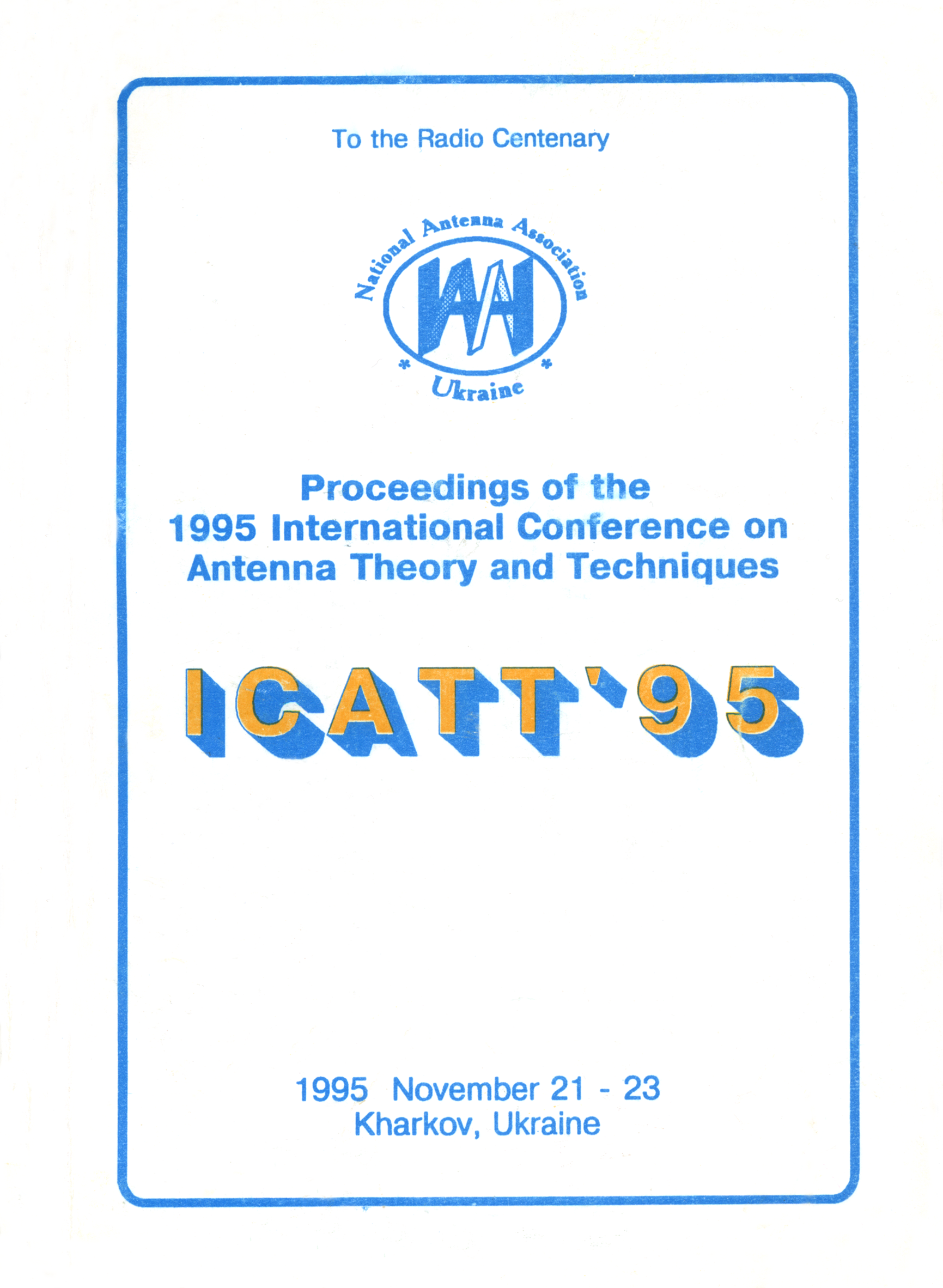Matching of antenna characteristics with methods of secondary signal processing
DOI:
https://doi.org/10.1109/ICATT.1995.1234117Abstract
The tomography methods of signal processing are widely used in modem radar, navigation, radioastronomy and medical systems to restore the wave field structure. The antennas incorporated to these systems are traditionally considered as a separated functional element which ought to ensure some spatial selectivity.
The development of new methods of inverse problems solution and increasing demand of compact antennas with high metrology characteristics (i.e. spatial resolution, noise immunity) caused the need of a new complex approach to the radioengineering systems development. The approach consists of the synthesis of the optimized antennas according to the features of the signal processing methods, i.e. the development of a matched pair “antenna-method”.
In the case of nonlinear method implementation, that is able to solve the problem of bandlimited extrapolation, the possibility appears to optimize antenna parameters, namely:
- to choose the field distribution in the antenna aperture that minimizes the error of the field structure restoration for continuum-aperture antennas;
- to find the antenna geometry which satisfies the given error demand for antenna arrays with a smaller number of array elements in comparison with the filled array.
The results of computer modelling and simulation are presented for the antennas with the different geometry to study the possibility of increasing the spatial resolution of a system, noise immunity enhancement, decreasing of the general antenna element number, adopting antenna to the geometry of the station, and approximating directional antenna pattern for a simpler computation. A comparative analysis of the most widespread methods of the inverse problem solution is presented, to investigate their ability to be used with different antennas.

